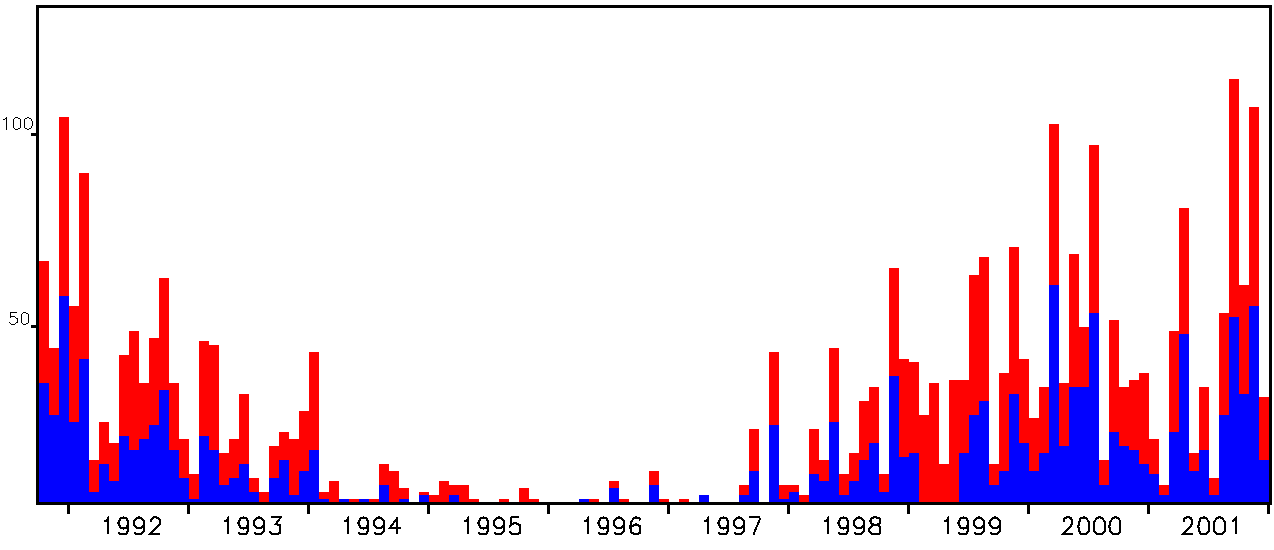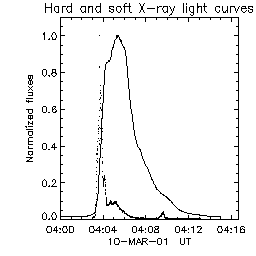
The Yohkoh hard X-ray flare catalog
The first of the four Yohkoh instruments to have come through with a survey catalog is the Hard X-ray Telescope HXT, which observes in the energy range 13-93 keV. This is nominally the domain of bremsstrahlung radiation produced by non-thermal electrons in the quasi-relativistic energy range. Its low-energy channels also sometimes respond to thermal sources closely related to those seen by Yohkoh's Soft X-ray Telescope (SXT). For several reasons HXT presented us with a revolutionary new kind of observation. Hard X-ray imaging now continues with the RHESSI satellite. A further point regarding HXT in the context of survey-type studies: the gain calibration of the instrument was meticulously maintained over its lifetime, because the imaging required it.

The catalog contains 3,115 flares and the plot above shows the distribution of major (red) and minor (blue) flares across the decade of observations, spanning about one 11-year sunspot cycle centered on a minimum.
Skimming through the catalog, a nice event met the eye. Why? Because of its hard spectrum - a glance at the peak counting rates from the four HXT energy channels immediately estimates the hard X-ray spectrum. This is because the selected channel widths result in equal counts for a very hard spectrum (power-law index approximately 2, near the physical limit). The chosen event has this property and also does not have a "broken power law", which many flares do. Does such a flare follow the Neupert effect or is the spectral hardness only an extreme case of the normal development? The plot below


shows that it's normal, if extreme in its spectral properties (see also the full time-series plot from the catalog). The hard X-ray counts (dotted line) appear to differentiate the light curve of soft X-rays, in rather good detail. The image shows an extremely compact soft X-ray source and a bare hint of double footpoints in hard X-rays. The hard spectrum therefore corresponds to an event in the low corona, an association familiar to the observers but without a published analysis; also there is no theory for it yet (of course!).
We went into the catalog with a specific question, curious about a single event. This is a good way to use it, but (as pointed out earlier) a better use of the catalog would be for systematic surveys. In SolarSoft there are tools for searching the catalog for specific attributes of flares; there is also software for reproducing and extending the sample images in the catalog.
May 31, 2002
Jun Sato, M. Sawa, and Hugh Hudson (hudson@isass1.solar.isas.ac.jp)